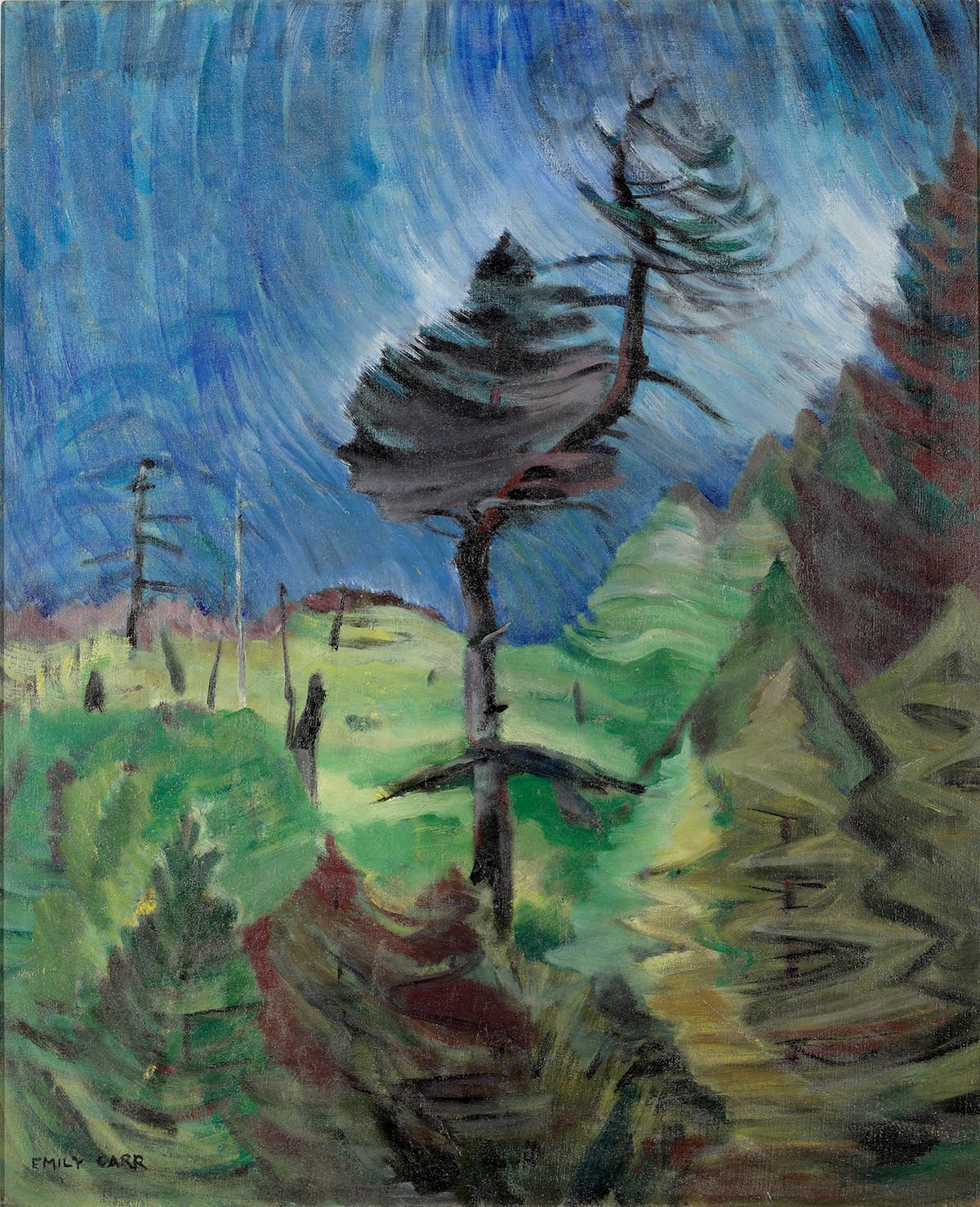A 1940 oil painting by Emily Carr (1871-1945) that has not been exhibited publicly for almost 60 years was unveiled today by Michael Audain, chairman of the Audain Foundation, at a press conference in Vancouver. Audain and his wife Yoshiko Karasawa provided the funds for the painting, Survival,to be acquired by the Audain Art Museum in Whistler, British Columbia. It was purchased via a private sale from a collector in Thailand, where Audain owns a home. It will enter the museum’s permanent collection and be on display there starting next month.
“I was drawn to this important painting because of the subject matter, the late period in her oeuvre and its distinguished provenance,” Audain said. “I felt it was important for Yoshiko and I to donate the funds so the Audain Art Museum could acquire this work, because it should definitely be returned to the west coast of Canada.”
Curtis Collins, the museum’s director and chief curator, added, “Survival brilliantly echoes Carr’s longstanding effort to evoke human emotions through highly charged renderings of [British Columbia’s] forests.”
Survivalwas one of four Carr works shown in Canada’s debut at the Venice Biennale in 1952, thanks to her championing by Group of Seven painter Lawren Harris.That presentation also included Carr’s Indian Church, renamed Church at Yuquot (1929), now at the Art Gallery of Ontario; and Blunden Harbour (1930) and Logged-over Hillside (around 1940), both now at the National Gallery of Canada. Survival was the only Carr work from the Biennale presentation still in private hands, and previously had belonged to J.E. Coyne, the second governor of the Bank of Canada.
The Venice Biennale exhibition was organised seven years after Carr’s death and proved a posthumous triumph for an artist who went largely unrecognised in her lifetime. As curator Lisa Baldissera noted in her book Emily Carr: Life and Work: “This representation of Canada on the world stage of contemporary art was a crucial moment in its understanding of itself as an industrialising modern nation. It was time for Canada to take its rightful place as an independent global entity that had distinguished itself from its role as a colony of Britain during two World Wars. Emily Carr’s work in particular, was chosen for its fusion of national identity with a new vision for landscape painting.”
The title of the painting—which features a lone old growth tree surrounded by the debris of clearcut logging, bent and broken but still defiant—is as much an expression of Carr’s prescient ecological concerns as it is a comment on her own resiliency. She faced poverty, antagonism from her family and widespread indifference to her work during her lifetime, but has become one of Canada’s most celebrated and iconic artists. “It’s important for Canada to have cultural heroes,” Audain said, “and I’m pleased Emily Carr has become one of them.”
This acquisition increases the Audain Museum’s clout as one of the most important collections of Carr’s work, after the Royal BC Museum, which houses almost 500 works and hundreds of archival ephemera, and the Vancouver Art Gallery (VAG), home to one of the most significant Carr collections in the world.
At today’s conference, Audain announced future collaborations with the VAG, whose director Anthony Kiendl was also in attendance. Kiendl later told The Art Newspaper that there will be a dedicated Carr gallery and research centre in the VAG’s new building—which breaks ground this spring, is expected to open in 2027 and toward which the Audain Foundation has donated C$100m ($80m).
Audain also revealed that his namesake museum has acquired a 1928 work by Lawren Harris, Mountain Sketch, which will also go on display there next month.


